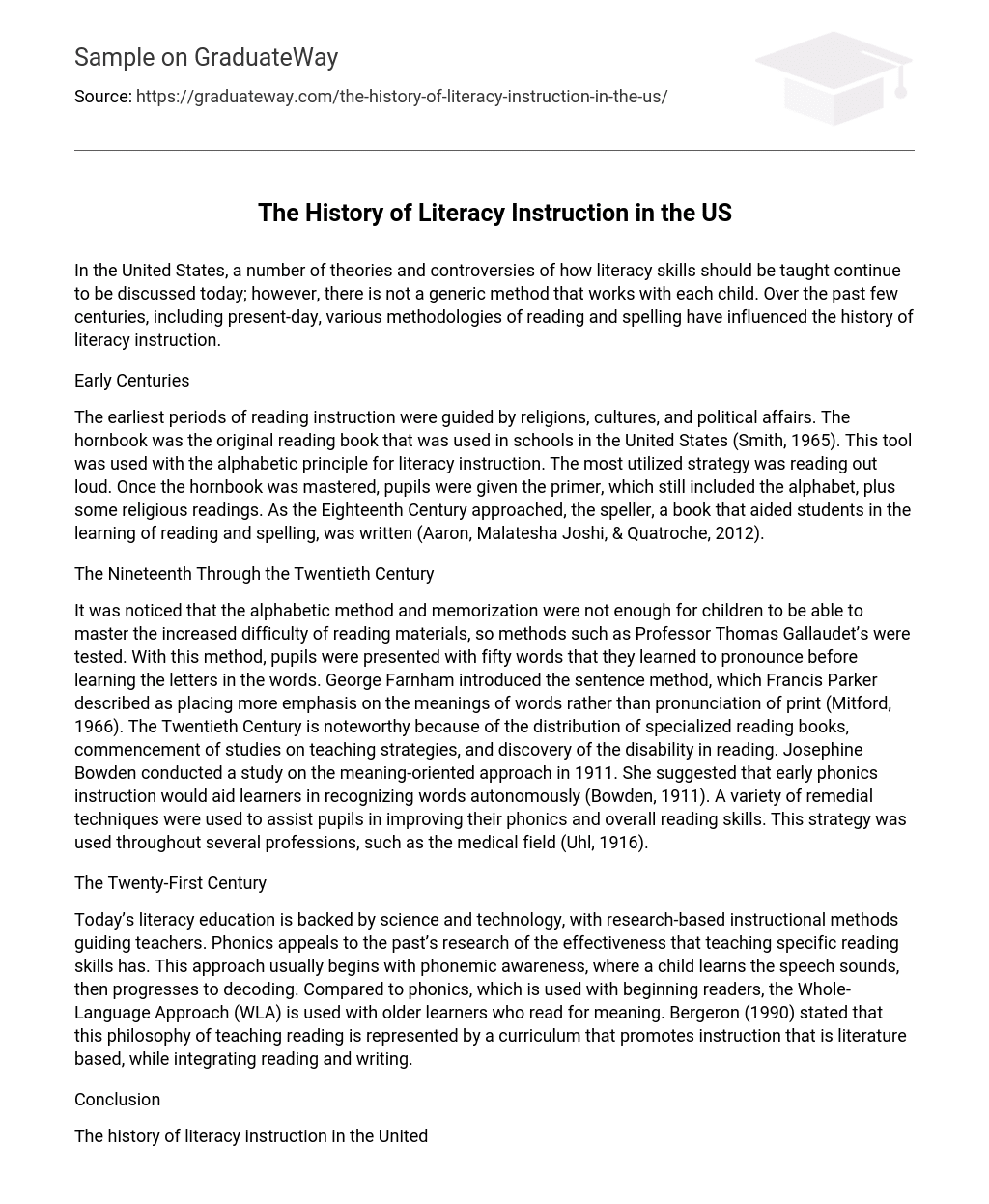In the United States, a number of theories and controversies of how literacy skills should be taught continue to be discussed today; however, there is not a generic method that works with each child. Over the past few centuries, including present-day, various methodologies of reading and spelling have influenced the history of literacy instruction.
Early Centuries
The earliest periods of reading instruction were guided by religions, cultures, and political affairs. The hornbook was the original reading book that was used in schools in the United States (Smith, 1965). This tool was used with the alphabetic principle for literacy instruction. The most utilized strategy was reading out loud. Once the hornbook was mastered, pupils were given the primer, which still included the alphabet, plus some religious readings. As the Eighteenth Century approached, the speller, a book that aided students in the learning of reading and spelling, was written (Aaron, Malatesha Joshi, & Quatroche, 2012).
The Nineteenth Through the Twentieth Century
It was noticed that the alphabetic method and memorization were not enough for children to be able to master the increased difficulty of reading materials, so methods such as Professor Thomas Gallaudet’s were tested. With this method, pupils were presented with fifty words that they learned to pronounce before learning the letters in the words. George Farnham introduced the sentence method, which Francis Parker described as placing more emphasis on the meanings of words rather than pronunciation of print (Mitford, 1966). The Twentieth Century is noteworthy because of the distribution of specialized reading books, commencement of studies on teaching strategies, and discovery of the disability in reading. Josephine Bowden conducted a study on the meaning-oriented approach in 1911. She suggested that early phonics instruction would aid learners in recognizing words autonomously (Bowden, 1911). A variety of remedial techniques were used to assist pupils in improving their phonics and overall reading skills. This strategy was used throughout several professions, such as the medical field (Uhl, 1916).
The Twenty-First Century
Today’s literacy education is backed by science and technology, with research-based instructional methods guiding teachers. Phonics appeals to the past’s research of the effectiveness that teaching specific reading skills has. This approach usually begins with phonemic awareness, where a child learns the speech sounds, then progresses to decoding. Compared to phonics, which is used with beginning readers, the Whole-Language Approach (WLA) is used with older learners who read for meaning. Bergeron (1990) stated that this philosophy of teaching reading is represented by a curriculum that promotes instruction that is literature based, while integrating reading and writing.
Conclusion
The history of literacy instruction in the United States dates back to as early as the Sixteenth Century, with countless opinions and philosophies that continue to influence reading pedagogy. Although there are numerous factors that affect a learners’ obtaining of literacy, such as a child’s age and capability range, there is more than one way to teach reading.





